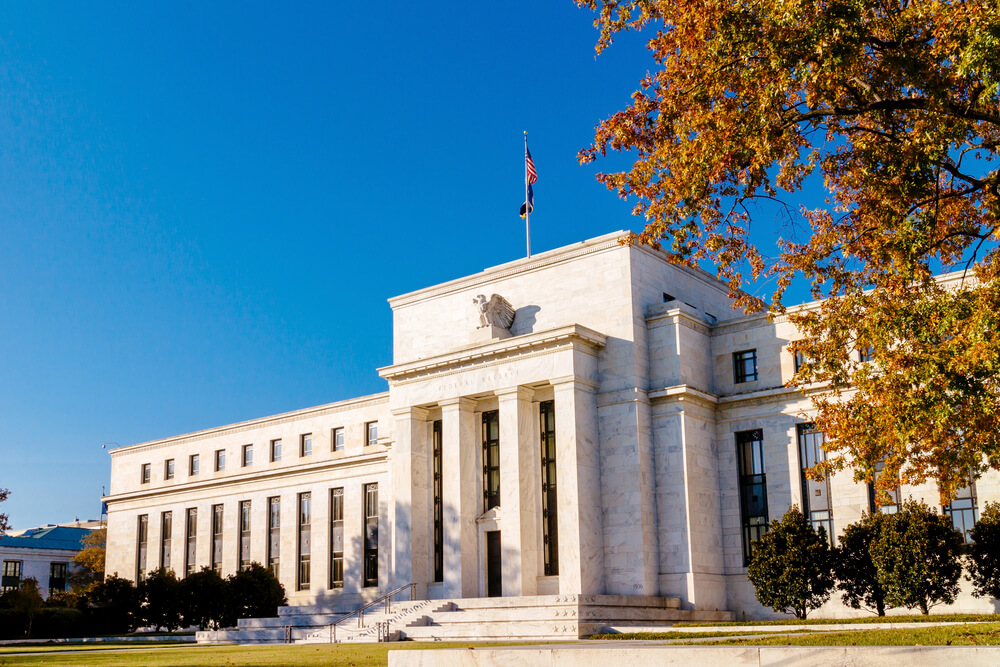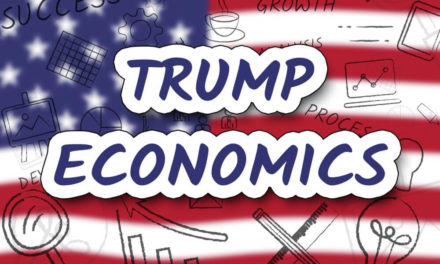The Federal Reserve left its key interest rate unchanged Wednesday and signaled that no rate hikes are likely in coming months amid signs of renewed economic health but unusually low inflation.
The Fed left its benchmark rate — which influences many consumer and business loans — in a range of 2.25% to 2.5%. Its low-rate policy has helped boost stock prices and supported a steadily growing economy.
A statement from the Fed spotlighted its continuing failure so far to accelerate annual inflation to at least its 2% target rate. The Fed’s preferred 12-month inflation barometer is running at about 1.5%. In pointing to persistently low inflation, the central bank may be raising expectations that its next rate change, whenever it happens, could be a rate cut rather than a hike. The Fed cuts rates when it’s trying to stimulate inflation or economic growth.
Soon after the Fed issued its statement, stock prices rose modestly. And the yield on the 10-year Treasury note, which influences mortgages and some other loans, fell slightly.
The Fed also made a technical adjustment Wednesday to reduce the interest it pays banks on reserves as a way to keep its benchmark rate inside its approved range, rather than at the upper end of that range.
The central bank’s decision to make no change in the policy rate policy — approved on a 10-0 vote — had been expected despite renewed pressure from President Donald Trump for the Fed to cut rates aggressively to help accelerate economic growth.
The Fed expressed a more upbeat view of the economy, saying “economic activity rose at a solid rate.” In March, the Fed had said it appeared that growth had slowed from the fourth quarter of last year.
The generally brighter outlook for the economy and the stock market represents a sharp rebound from the final months of 2018, when concerns about a possible global recession and fear of further Fed rate increases had darkened the economic picture. Stock prices tumbled late last year, especially after the Fed in December not only raised rates for the fourth time in 2018 but suggested that it was likely to keep tightening credit this year.
Yet starting in January, the Fed engineered an abrupt reversal, suggesting that it was finished raising rates for now and might even act this year to support rather than restrain the economy. Its watchword became “patient.” And investors have responded by delivering a major stock market rally.
The market gains have also been fed by improved growth prospects in China and some other major economies and by the view that a trade war between the world’s two biggest economies, the United States and China, is nearing a resolution.
Last week, the government reported that the U.S. economy grew at a surprisingly strong 3.2% annual rate in the January-March quarter. It was the best performance for a first quarter in four years, and it far surpassed initial forecasts that annual growth could be as weak as 1% at the start of the year.
If economic prospects were to brighten further, could Fed officials rethink their plans to suspend further rate hikes and perhaps resume tightening credit?
Possibly. But investors don’t seem to think so. According to data tracked by the CME Group, investors foresee zero probability that the Fed will raise rates anytime this year. And in fact, their bets indicate a roughly 64% likelihood that the Fed will cut rates before year’s end.
One factor in that dovish view is that the economy might not be quite as robust as the latest economic figures suggest. The first quarter’s healthy 3.2% annual growth rate was pumped up by some temporary factors — from a surge in restocking of companies’ inventories to a narrowing of the U.S. trade deficit — that are expected to reverse themselves. If so, this would diminish the pace of growth and likely hold down inflation.
Indeed, for all of 2019, growth is expected to total around 2.2%, down from last year’s 2.7% gain, as the effects of the 2017 tax cuts and billions of dollars in increased government spending fade.
At the same time, the Fed is still struggling to achieve one of its mandates: To produce inflation of roughly 2%. This week, the government reported that the Fed’s preferred inflation gauge rose just 1.5% in March from 12 months earlier. Many analysts say they think the Fed won’t resume raising rates until inflation hits or exceeds its 2% target.
Too-low inflation is seen as an obstacle because it tends to depress consumer spending, the economy’s main fuel, as people delay purchases in anticipation of flat or even lower prices. It also raises the inflation-adjusted cost of a loan.
The Federal Reserve’s Official Statement Released Wednesday
Information received since the Federal Open Market Committee met in March indicates that the labor market remains strong and that economic activity rose at a solid rate. Job gains have been solid, on average, in recent months, and the unemployment rate has remained low. Growth of household spending and business fixed investment slowed in the first quarter. On a 12-month basis, overall inflation and inflation for items other than food and energy have declined and are running below 2 percent. On balance, market-based measures of inflation compensation have remained low in recent months, and survey-based measures of longer-term inflation expectations are little changed.
Consistent with its statutory mandate, the Committee seeks to foster maximum employment and price stability. In support of these goals, the Committee decided to maintain the target range for the federal funds rate at 2-1/4 to 2-1/2 percent. The Committee continues to view sustained expansion of economic activity, strong labor market conditions, and inflation near the Committee’s symmetric 2 percent objective as the most likely outcomes. In light of global economic and financial developments and muted inflation pressures, the Committee will be patient as it determines what future adjustments to the target range for the federal funds rate may be appropriate to support these outcomes.
In determining the timing and size of future adjustments to the target range for the federal funds rate, the Committee will assess realized and expected economic conditions relative to its maximum employment objective and its symmetric 2 percent inflation objective. This assessment will take into account a wide range of information, including measures of labor market conditions, indicators of inflation pressures and inflation expectations, and readings on financial and international developments.
Voting for the FOMC monetary policy action were: Jerome H. Powell, Chair; John C. Williams, Vice Chair; Michelle W. Bowman; Lael Brainard; James Bullard; Richard H. Clarida; Charles L. Evans; Esther L. George; Randal K. Quarles; and Eric S. Rosengren.
© The Associated Press. All rights reserved.




